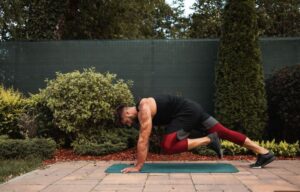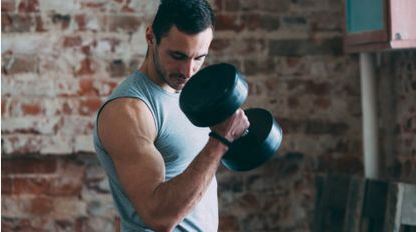Workout for Beginners at Home: A Guide for Female Fitness Enthusiasts
Introduction
Embarking on a fitness journey as a beginner can be both exciting and daunting, especially when considering workouts at home. However, it’s crucial to understand the significance of regular exercise for overall health and well-being. Whether you’re aiming to boost your energy levels, improve your mood, or enhance your physical strength, incorporating workouts into your daily routine can have numerous benefits.
Setting Goals
Before diving into any workout routine, it’s essential to establish realistic fitness goals. Setting achievable objectives can help you stay motivated and track your progress effectively. Whether your goal is to lose weight, build muscle, or simply improve your endurance, having a clear vision of what you want to accomplish will guide your fitness journey.
Creating a Routine
Consistency is key when it comes to seeing results from your workouts. Designing a structured routine that fits into your daily schedule will make it easier to stay committed. Whether you prefer morning workouts to kickstart your day or evening sessions to unwind after work, finding a time that works best for you is crucial.
Warm-Up Exercises
Before engaging in any strenuous activity, it’s essential to warm up your muscles to prevent injuries. Incorporating dynamic stretches and light cardio exercises into your warm-up routine can help prepare your body for more intense workouts. Spending a few minutes loosening up your muscles will increase blood flow and flexibility, reducing the risk of strains or sprains.

Cardiovascular Workouts
Cardio exercises are excellent for improving heart health, boosting metabolism, and burning calories. As a beginner, start with low-impact cardio workouts such as brisk walking, cycling, or swimming. Gradually increase the intensity and duration of your cardio sessions as your fitness level improves.
Strength Training
Strength training plays a vital role in building lean muscle mass and increasing overall strength. Begin with bodyweight exercises such as squats, lunges, push-ups, and planks to target major muscle groups. As you progress, you can incorporate resistance bands or light weights to challenge your muscles further.
Core Strengthening
A strong core is essential for maintaining proper posture, stability, and balance. Incorporate exercises such as crunches, bicycle kicks, and plank variations into your routine to strengthen your abdominal muscles. A strong core not only improves physical performance but also reduces the risk of back pain and injuries.
Flexibility Exercises
Improving flexibility is often overlooked but is crucial for preventing injuries and enhancing mobility. Incorporate stretching exercises such as yoga or Pilates into your routine to improve flexibility and range of motion. Focus on targeting different muscle groups to ensure overall flexibility.
Rest and Recovery
Allowing your body adequate time to rest and recover is just as important as working out. Schedule rest days into your weekly routine to prevent burnout and allow your muscles to repair and grow. Listen to your body and avoid pushing yourself too hard, as overtraining can lead to fatigue and injuries.
Tracking Progress
Keeping track of your progress can help you stay motivated and focused on your goals. Whether you use a fitness journal, mobile app, or wearable fitness tracker, recording your workouts, measurements, and achievements can provide valuable insight into your fitness journey. Celebrate your milestones along the way to stay motivated and inspired.
Staying Hydrated and Eating Right
Proper hydration and nutrition are essential components of a successful workout routine. Drink plenty of water throughout the day to stay hydrated, especially before, during, and after exercise. Fuel your body with a balanced diet rich in lean protein, complex carbohydrates, healthy fats, fruits, and vegetables to support your energy levels and recovery.
Overcoming Challenges
It’s normal to encounter obstacles and setbacks along your fitness journey. Whether it’s lack of motivation, time constraints, or plateaus, remember that perseverance is key. Find creative solutions to overcome challenges, such as trying new workouts, seeking support from friends or online communities, or working with a fitness coach.
Safety Tips
Prioritize safety during your workouts to prevent injuries and setbacks. Always start with a proper warm-up and listen to your body’s signals to avoid pushing yourself too hard. Use proper form and technique during exercises to reduce the risk of strains or overuse injuries. If you experience pain or discomfort, stop immediately and seek guidance from a healthcare professional.
Seeking Professional Guidance
If you’re unsure where to start or have specific fitness goals in mind, consider seeking guidance from a certified personal trainer or fitness professional. A trained expert can design a customized workout plan tailored to your individual needs, provide motivation and accountability, and ensure proper technique and safety.
Conclusion
Embarking on a workout journey as a beginner can be both challenging and rewarding. By following a structured routine, setting realistic goals, and prioritizing safety and self-care, you can embark on a successful fitness journey from the comfort of your own home. Remember to stay consistent, stay motivated, and celebrate your progress along the way.
FAQs (Frequently Asked Questions)
- How often should beginners work out at home?Beginners should aim to exercise at least three to four times per week, allowing for rest days in between sessions to allow for proper recovery.
- Do I need any equipment for home workouts as a beginner?While some exercises may require minimal equipment such as resistance bands or dumbbells, many effective workouts can be performed using just your body weight.
- How long should a beginner workout session last?Start with shorter workout sessions lasting around 20-30 minutes and gradually increase the duration as your fitness level improves.
